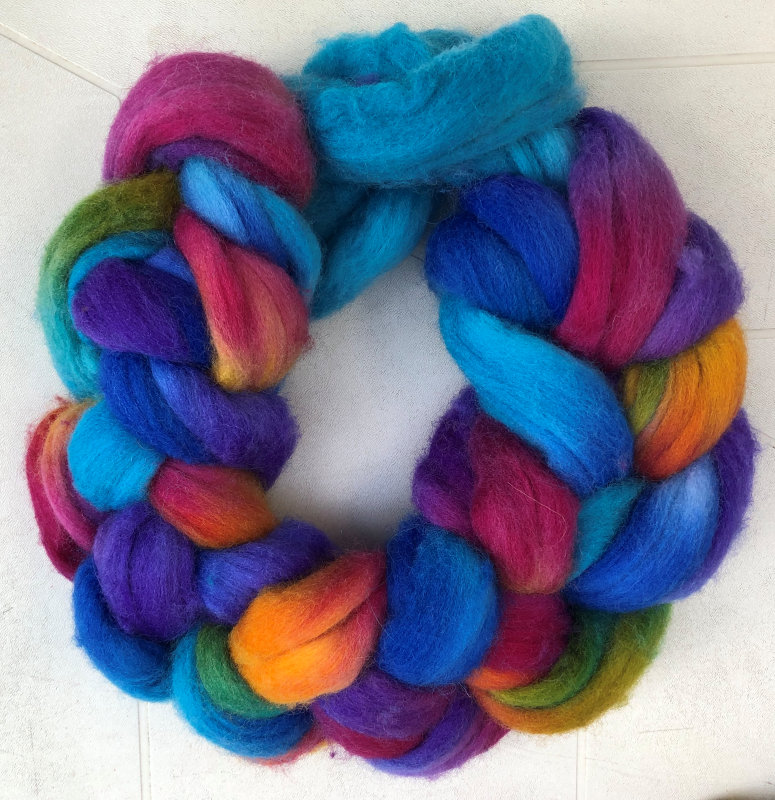| I start by preparing the dye. You need 1 gram of dye per 100 grams of wool. Since I don't need that much, I prepare a liter of dye and use only a small amount. I don't add any acid yet to keep the dye mixture stable. Using the dye, I create spots on my pre-soaked roving. Then, I wrap the roving in plastic wrap and place it in a glass bowl that I can clean thoroughly in the dishwasher. |
| The roving goes into the microwave for 3 minutes on high. Then, I let it cool down. Once the roving has cooled a bit, I unfold the plastic wrap, allowing the wool to cool further. |
| When the wool has cooled down sufficiently, I rinse it in clean water and lay it out to dry on a towel. The roving looks beautiful. |
| When I braid the roving, it looks even more delightful. Almost a shame to use it. Here's one braid, but I've made two that are approximately identical. One braid weighs about 125 grams. |
| Before I start spinning the wool, I split the roving into 4 roughly equal parts. It's not crucial that they are perfectly even in thickness. Approximately is good enough. Then I spin them on my Ashford Elisabeth spinning wheel. It looks colorful! |
| You can see all the colors from the braid, along with some blended tones. There's about 60 grams of wool on one bobbin, which is 2 of the 4 parts of a braid. |
 I bought Ashford wool dye and some Merino roving. I want to dye the roving in bright colors, spin it, and then use it to make a scarf, for example. It's quite a bit of work altogether.
I bought Ashford wool dye and some Merino roving. I want to dye the roving in bright colors, spin it, and then use it to make a scarf, for example. It's quite a bit of work altogether. I bought Ashford wool dye and some Merino roving. I want to dye the roving in bright colors, spin it, and then use it to make a scarf, for example. It's quite a bit of work altogether.
I bought Ashford wool dye and some Merino roving. I want to dye the roving in bright colors, spin it, and then use it to make a scarf, for example. It's quite a bit of work altogether.